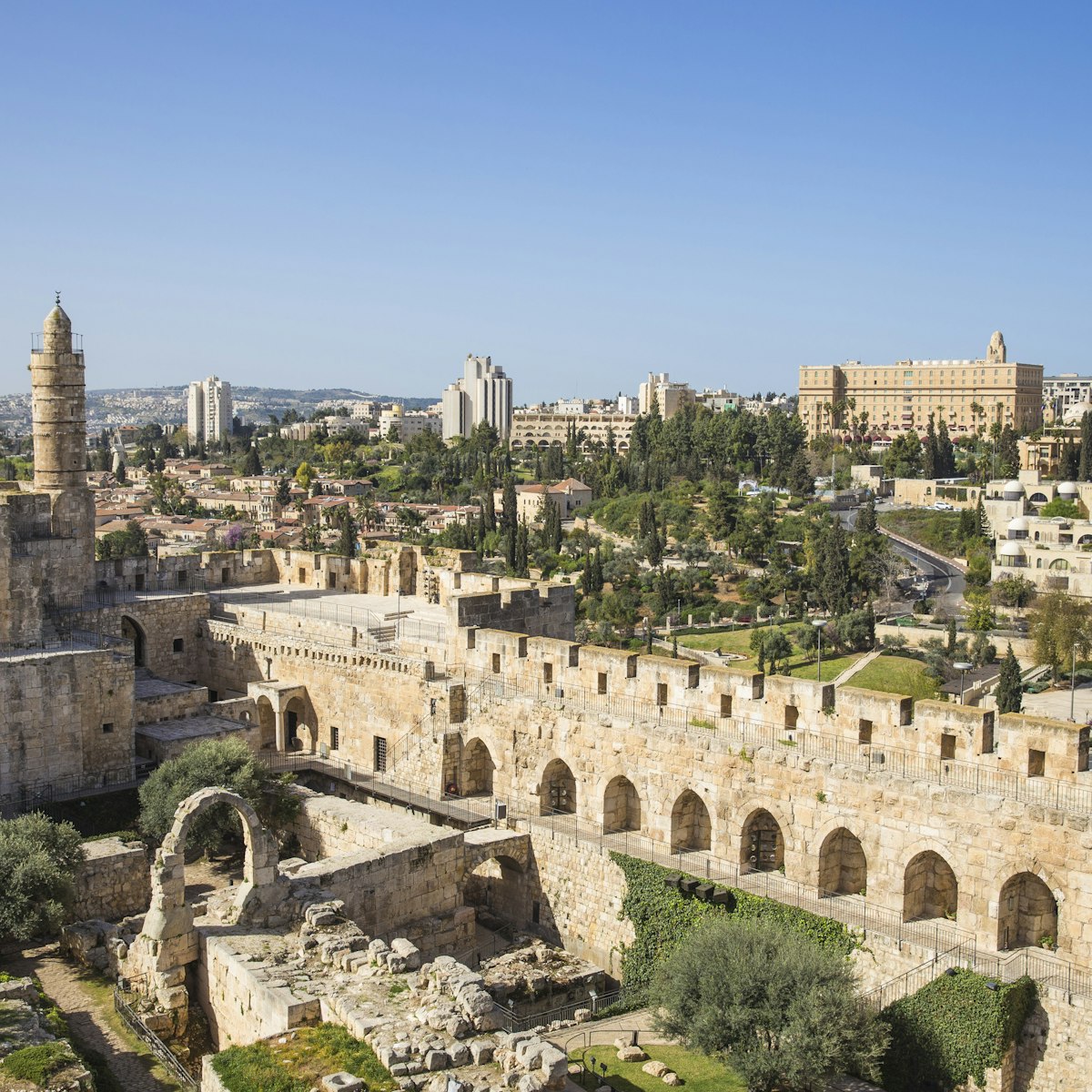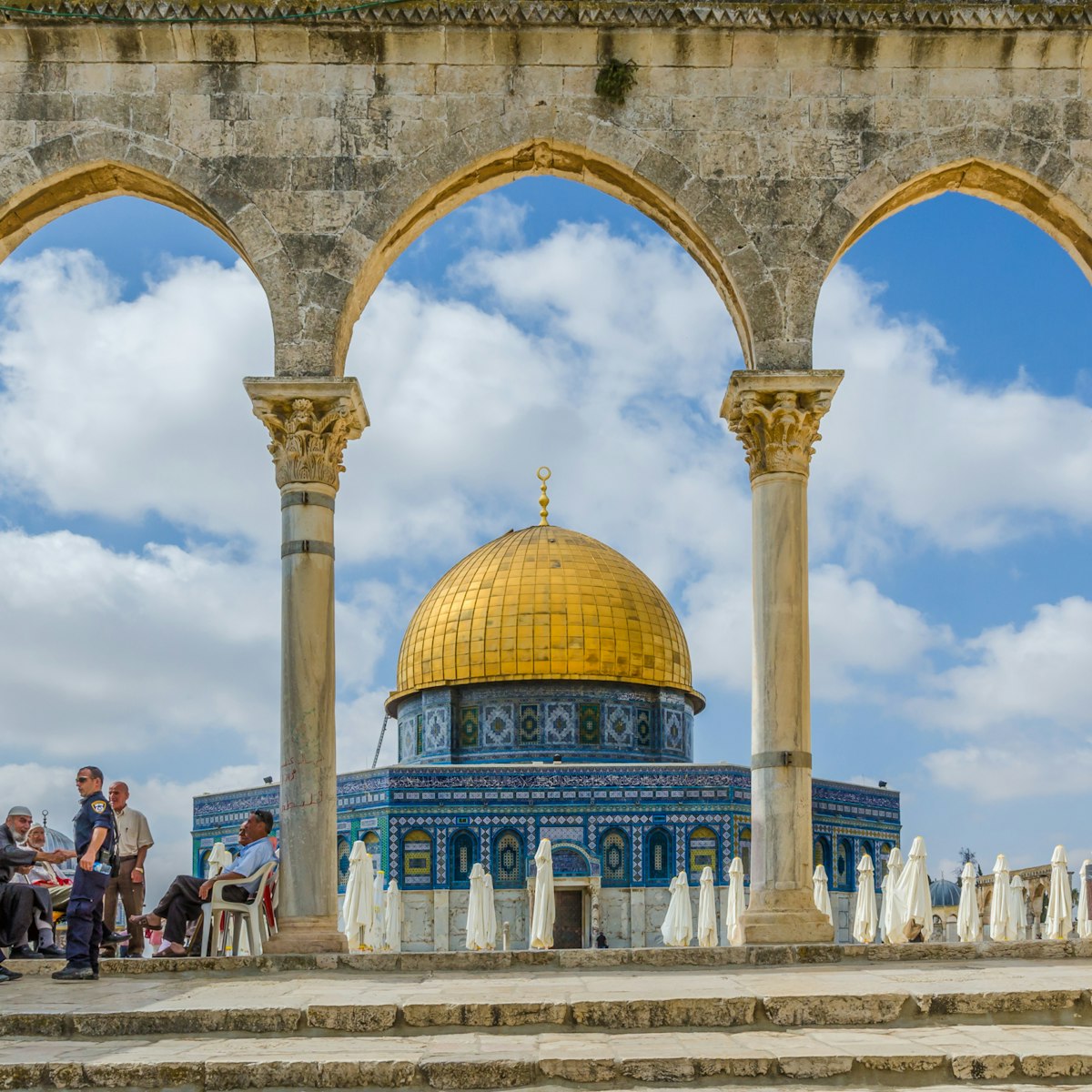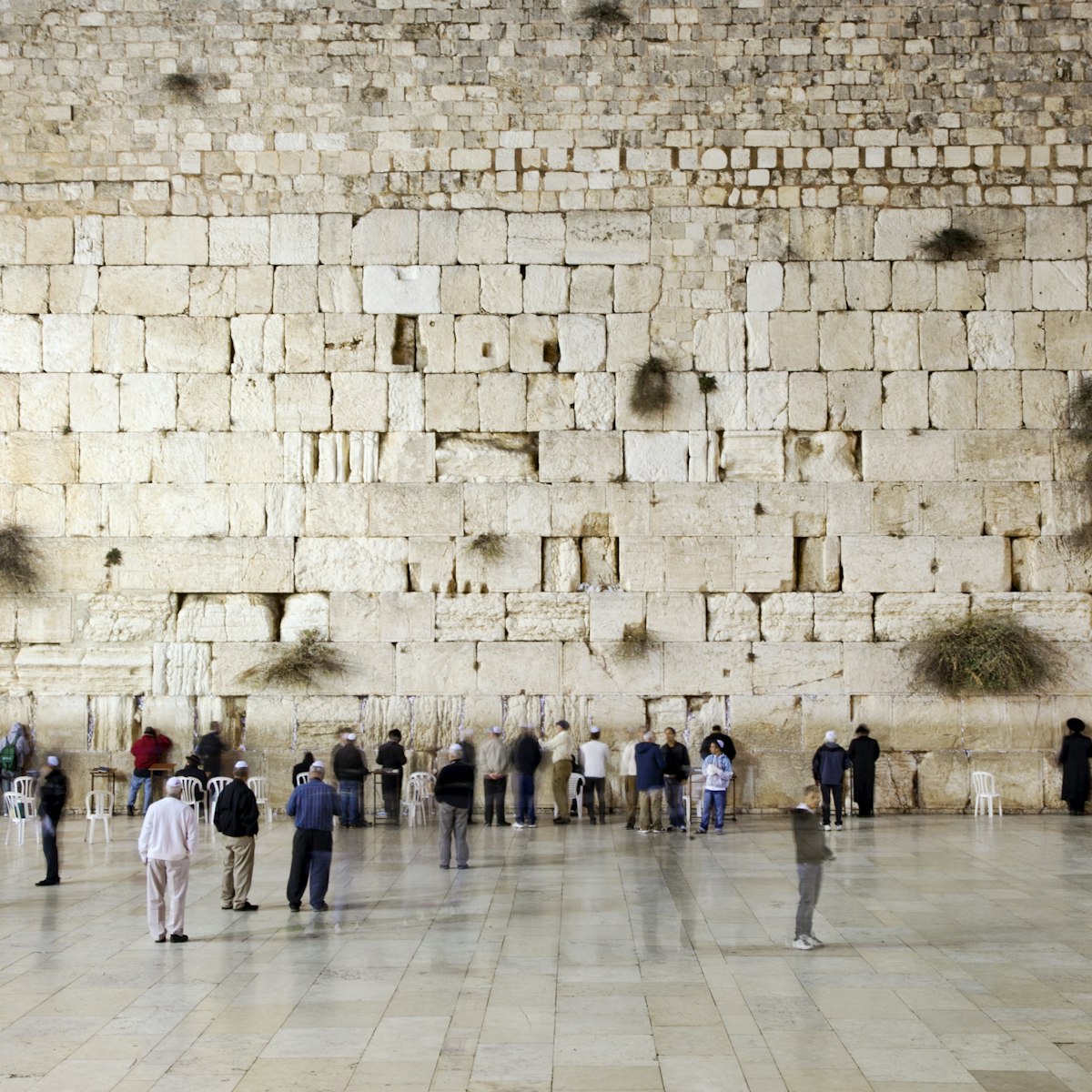Pore over the remains of streets, columns, gates, walls, plazas and mikve'ot (Jewish ritual baths) at this archaeological site near Dung Gate. An audio guide is a helpful accompaniment at the open-air portion of the site, while video presentations (in Hebrew and English) at the visitors centre give an overview of the main excavations in the 1970s and reconstruct the site as it looked 2000 years ago.
As you enter, you’ll notice on your left the remains of what was once Jerusalem's main street, which ran the length of the Temple's Western Wall. Note the remains of an arch protruding from Herod’s wall – this is Robinson’s Arch (named after a 19th-century American explorer), once part of a bridge that connected Temple Mount and the city's main commercial area. The piles of stones on the Herod-era street below the arch are said to be part of the Western Wall, hurled down by Roman soldiers as they destroyed the Temple in 70 CE. Nearby is a divided staircase leading down to a mikveh from the same period; one side was for bathers on the way to the bath and the other was for bathers who had been purified.
This is also the site of the Masorti prayer area, the long-running, contentious (to ultra-Orthodox Jews) and not-yet-finalised space for men and women to pray together. A temporary platform has been in the meantime, which is accessible 24 hours seven days a week through the turnstile before you enter the security gate for the Western Wall plaza.
At the back of the site (ie closest to the Mount of Olives) are the Huldah Gates, also built in the Second Temple period. These originally gave access to tunnels that led up to the Temple Mount enclosure. Nearby is a largely reconstructed staircase that was once the main entry for pilgrims headed to Temple Mount. Near the bottom of the steps you can spot more mikve'ot.
Book in advance for guided tours.







